
Aveiro: The Venice of Portugal
Discover Aveiro: The Venice of Portugal with its picturesque canals, stunning Art Nouveau architecture, and delicious seafood cuisine.
Aveiro, a charming city in Portugal, is often referred to as the 'Venice of Portugal' due to its picturesque canals and colorful moliceiro boats. Located along the Atlantic coast, Aveiro offers a unique blend of natural beauty, rich history, and vibrant culture, making it a must-visit destination for tourists. One of the highlights of Aveiro is its stunning Art Nouveau architecture, which can be admired while strolling through the city streets. The city's historic center is a delightful maze of narrow, winding streets lined with pastel-colored buildings, quaint shops, and inviting cafes. Don't miss the chance to visit the Aveiro Museum, housed in a former convent, to learn more about the city's fascinating past. Aveiro is also known for its delicious local cuisine, particularly its fresh seafood. Be sure to try the regional specialty, ovos moles, a sweet treat made from egg yolks and sugar, which is a true delight for the taste buds. For those who love nature, the nearby Ria de Aveiro lagoon offers opportunities for bird watching, kayaking, and relaxing boat rides. Whether you're exploring the city's charming canals, indulging in its culinary delights, or simply soaking in the relaxed atmosphere, Aveiro is a destination that promises an unforgettable experience.
Local tips in Aveiro
- Visit the fish market early in the morning to experience the local culture and buy fresh seafood.
- Take a moliceiro boat tour to get a unique perspective of the city's canals and learn about its history.
- Try ovos moles, a local sweet delicacy, from one of the traditional pastry shops in the city.
- Rent a bicycle to explore the city's scenic bike paths and surrounding nature trails.
- Check out the salt pans near Aveiro for a fascinating glimpse into the traditional salt-harvesting process.
Aveiro: The Venice of Portugal
Aveiro, a charming city in Portugal, is often referred to as the 'Venice of Portugal' due to its picturesque canals and colorful moliceiro boats. Located along the Atlantic coast, Aveiro offers a unique blend of natural beauty, rich history, and vibrant culture, making it a must-visit destination for tourists. One of the highlights of Aveiro is its stunning Art Nouveau architecture, which can be admired while strolling through the city streets. The city's historic center is a delightful maze of narrow, winding streets lined with pastel-colored buildings, quaint shops, and inviting cafes. Don't miss the chance to visit the Aveiro Museum, housed in a former convent, to learn more about the city's fascinating past. Aveiro is also known for its delicious local cuisine, particularly its fresh seafood. Be sure to try the regional specialty, ovos moles, a sweet treat made from egg yolks and sugar, which is a true delight for the taste buds. For those who love nature, the nearby Ria de Aveiro lagoon offers opportunities for bird watching, kayaking, and relaxing boat rides. Whether you're exploring the city's charming canals, indulging in its culinary delights, or simply soaking in the relaxed atmosphere, Aveiro is a destination that promises an unforgettable experience.
When is the best time to go to Aveiro?
Iconic landmarks you can’t miss
Forum Aveiro
Explore Forum Aveiro: a vibrant shopping mall in Aveiro, Portugal, offering diverse retail, dining, and entertainment experiences for all ages.
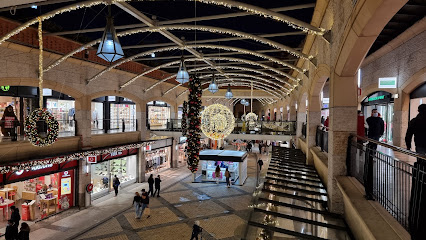
Farol de Aveiro
Explore the historic Farol de Aveiro, a stunning lighthouse in Gafanha da Nazaré, where maritime history meets breathtaking coastal views.
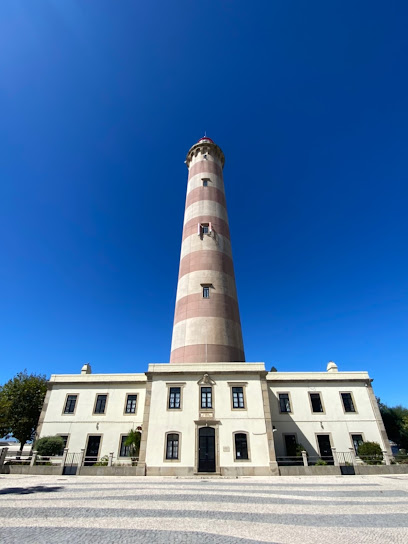
Ponte dos Laços de Amizade
Discover the stunning Ponte dos Laços de Amizade in Aveiro, a modern bridge blending artistic beauty with breathtaking views of the city's charming canals.
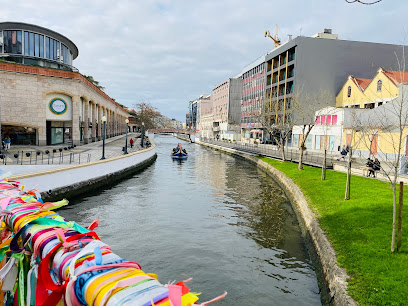
Infante Dom Pedro Park - City Park
Explore Infante Dom Pedro Park in Aveiro: A lush urban oasis perfect for relaxation, recreation, and enjoying nature's beauty.
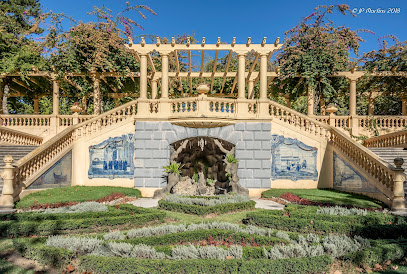
Aveiro Exhibition Park
Explore the Aveiro Exhibition Park, a vibrant center for cultural events and trade fairs in the heart of Aveiro, Portugal.

Aveiro Salt Flats
Discover the Aveiro Salt Flats, a stunning open-air museum showcasing traditional salt harvesting amidst breathtaking natural scenery.
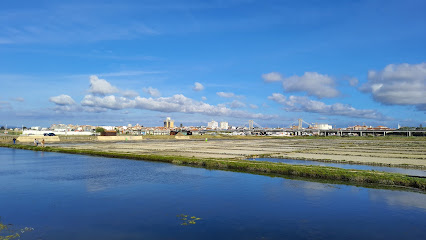
Museu Marítimo de Ílhavo e Aquário dos Bacalhaus
Explore the rich maritime history of Portugal at Museu Marítimo de Ílhavo, featuring captivating exhibits and vibrant marine life.
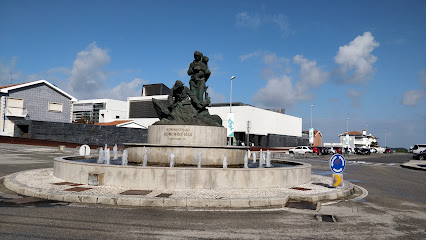
Aveiro Museum
Explore Aveiro Museum: A window to Portugal's rich cultural heritage and artistic treasures in the heart of Aveiro.
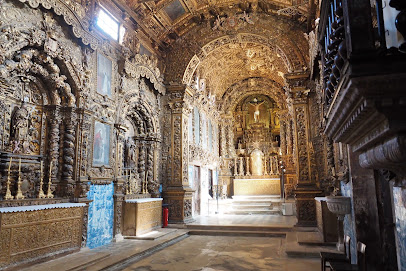
Reserva Natural das Dunas de São Jacinto
Discover the breathtaking landscapes and diverse wildlife of Reserva Natural das Dunas de São Jacinto, a natural paradise along Portugal's stunning coast.
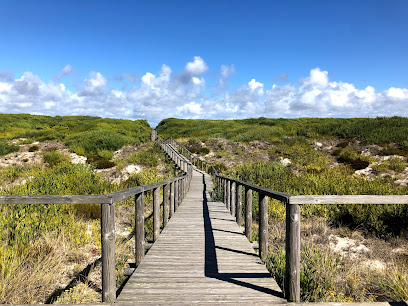
Moliceiros Pier
Experience the enchanting canals of Aveiro at Moliceiros Pier, where tradition meets stunning scenery on vibrant boat rides.
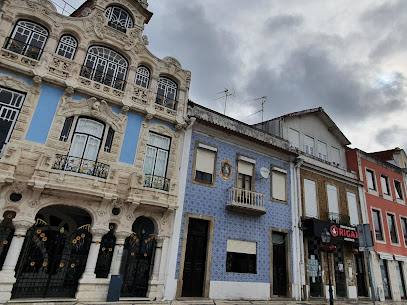
St. Anthony Park
Experience the serene beauty of St. Anthony Park in Aveiro, a perfect blend of nature and culture ideal for tourists seeking relaxation.
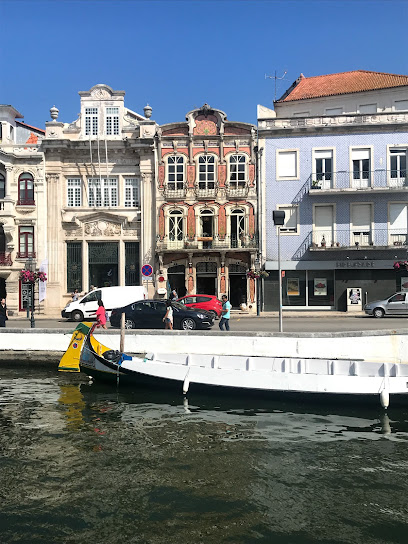
Hotel Aveiro Palace
Discover the elegance of Hotel Aveiro Palace, where luxury meets tradition in the beautiful city of Aveiro, Portugal.

Aveiro City Center by Visit-Aveiro
Explore the picturesque canals and vibrant architecture of Aveiro City Center, a captivating destination rich in culture and gastronomy.
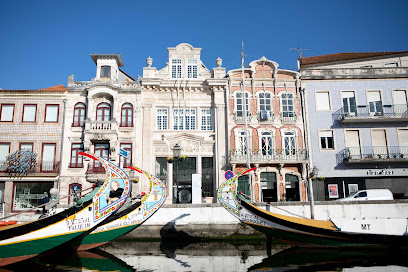
Garden Alboi
Explore the lush greenery and serene atmosphere of Garden Alboi, a tranquil park in the heart of Aveiro, Portugal, perfect for relaxation and enjoyment.
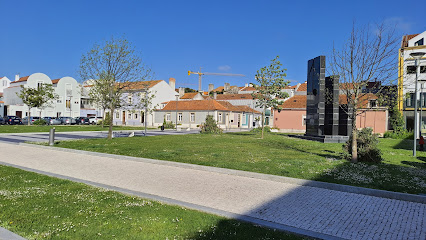
Aveiro station
Discover the beauty of Aveiro Station, the architectural gem that connects you to the stunning landscapes and rich culture of Portugal's Venice.
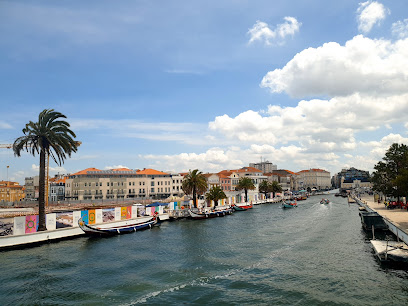
Unmissable attractions to see
Casas Típicas da Costa Nova
Discover the vibrant charm of Costa Nova, with its iconic striped houses, stunning beaches, and rich Portuguese coastal culture.

Praia da Costa Nova
Experience the vibrant beauty of Praia da Costa Nova, a stunning beach in Portugal famous for its colorful houses and exceptional seafood dining.
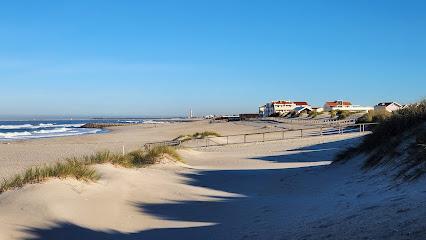
Farol de Aveiro
Discover the stunning Farol de Aveiro, a historic lighthouse offering breathtaking views and a glimpse into Portugal's maritime heritage.
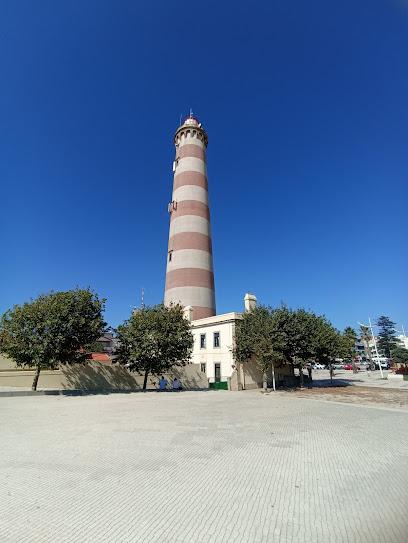
Ponte dos Laços de Amizade
Experience the charm of Ponte dos Laços de Amizade in Aveiro, a bridge adorned with colorful ribbons symbolizing love and connection.
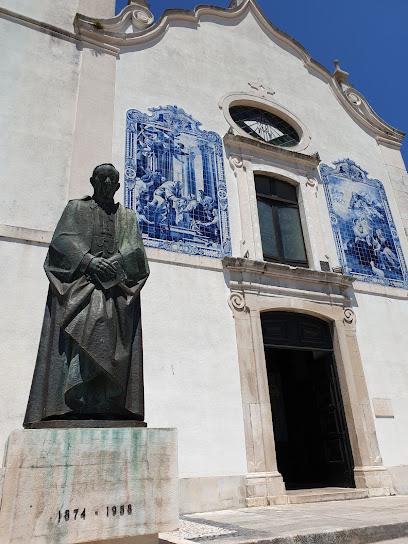
Ponte dos Laços de Amizade
Discover the charm of Aveiro at Ponte dos Laços de Amizade, a beautiful bridge offering stunning canal views and a taste of local culture.
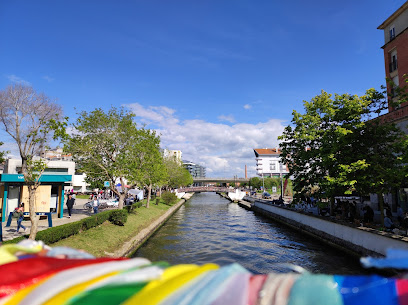
Infante Dom Pedro Park - City Park
Explore the natural beauty and tranquility of Infante Dom Pedro Park in Aveiro, a perfect retreat for nature lovers and urban explorers alike.
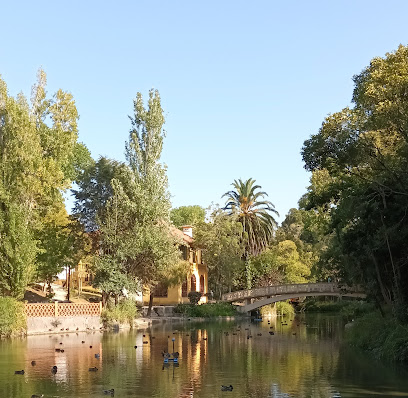
Praia da Granja
Explore the serene Praia da Granja, a coastal gem in São Félix da Marinha, perfect for sunbathing, swimming, and savoring local cuisine.
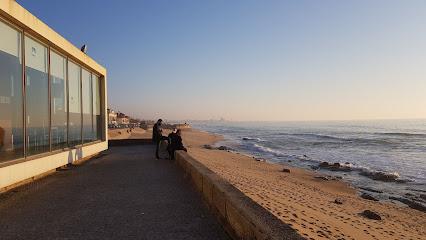
Associação Geoparque Arouca (AGA)
Explore Arouca Geopark: A UNESCO site with stunning landscapes, rich geological heritage, and an engaging visitor center for a memorable adventure.
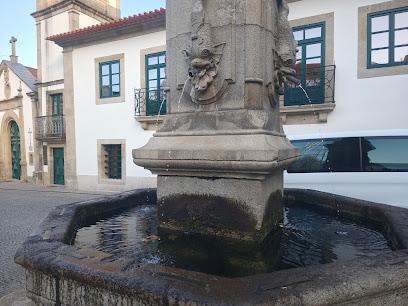
Choupal National Forest
Discover the tranquil beauty of Choupal National Forest, a national gem in Coimbra, Portugal, perfect for nature lovers and adventure seekers alike.
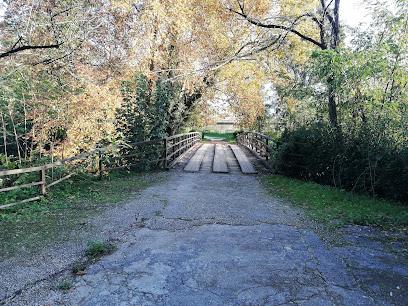
Aveiro Salt Flats
Explore the enchanting Aveiro Salt Flats, a stunning open-air museum showcasing traditional salt harvesting and vibrant wildlife in Portugal.
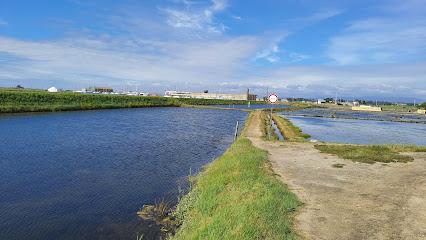
Buçaco National Forest
Explore the breathtaking landscapes and rich history of Buçaco National Forest, a serene paradise in Portugal perfect for nature enthusiasts and culture seekers.
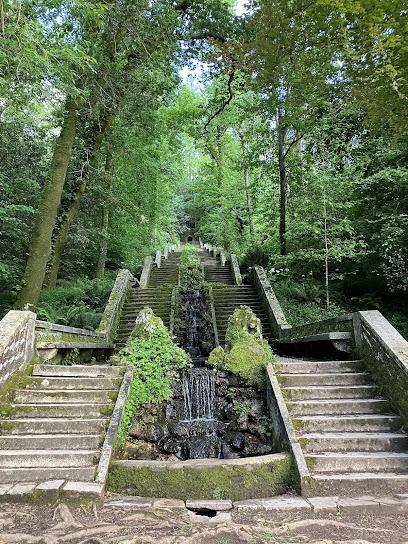
Museu Marítimo de Ílhavo e Aquário dos Bacalhaus
Explore the maritime heritage of Portugal at the Museu Marítimo de Ílhavo, featuring cod aquariums and rich historical exhibits.
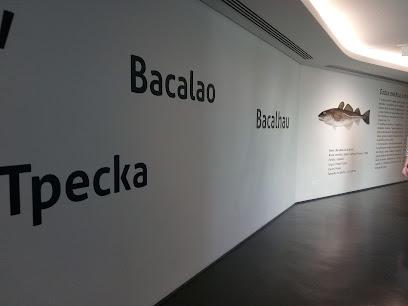
Mercado da Costa Nova
Discover the vibrant Mercado da Costa Nova in Gafanha da Encarnação, where fresh seafood meets Portuguese coastal culture.

Aveiro Museum
Explore the Aveiro Museum, where history, art, and culture converge in a stunning former convent, offering a captivating journey through Aveiro's rich heritage.
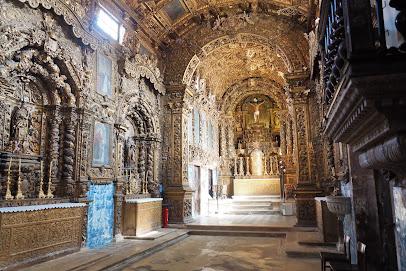
Igreja Matriz de Santa Maria de Válega
Immerse yourself in the rich history and stunning architecture of Igreja Matriz de Santa Maria de Vála, a must-visit Catholic church in Portugal.
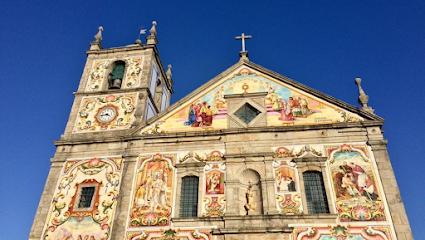
Essential places to dine
Subenshi Sushi
Experience authentic Japanese cuisine at Subenshi Sushi in Aveiro – a must-visit spot for sushi lovers seeking fresh flavors.
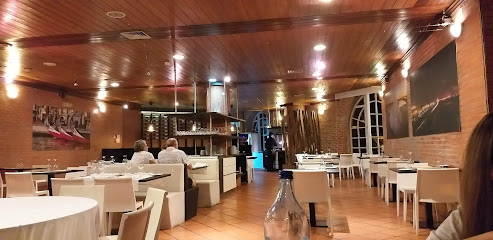
Maré Cheia
Experience authentic Portuguese seafood at Maré Cheia in Aveiro – where fresh ingredients meet warm hospitality.
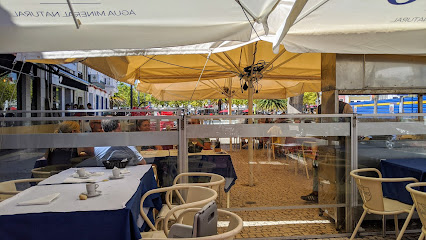
A Nossa Casa
Experience authentic Portuguese cuisine at A Nossa Casa, where traditional flavors meet fresh seafood in a cozy setting in Aveiro.
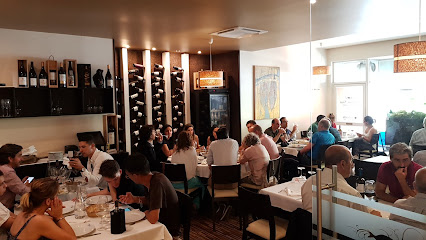
Adega Típica O Telheiro
Savor authentic Portuguese dishes at Adega Típica O Telheiro in Aveiro, where tradition meets flavor in a cozy setting.
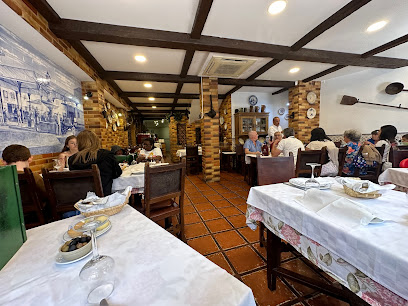
Alicarius
Discover unique flavors at Alicarius Brewpub in Aveiro - where craft beer meets delicious cuisine in a vibrant setting.
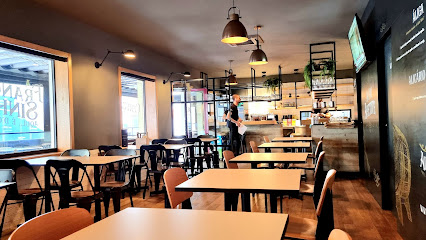
Restaurante O Bairro
Experience authentic Portuguese flavors at Restaurante O Bairro in Aveiro - where culinary traditions meet modern dining.
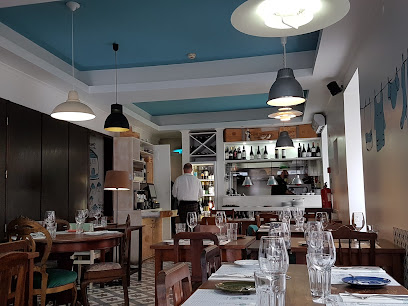
Salpoente
Experience exceptional seafood dining at Salpoente in Aveiro – where local flavors meet artistic presentation.

Cais do Pescado
Discover Cais do Pescado in Aveiro - where fresh seafood meets stunning waterfront views in an unforgettable dining experience.
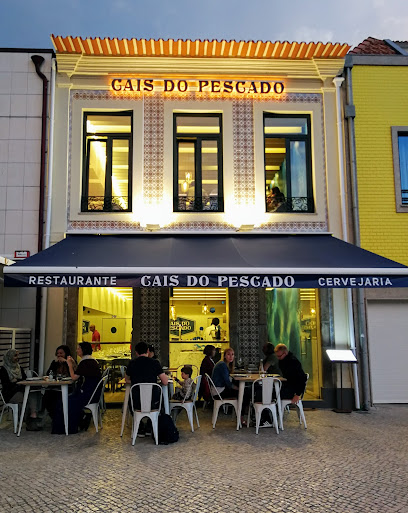
Urban Spot
Experience the vibrant flavors of brunch at Urban Spot in Aveiro—where delicious meals meet artisanal coffee and delectable ice creams.
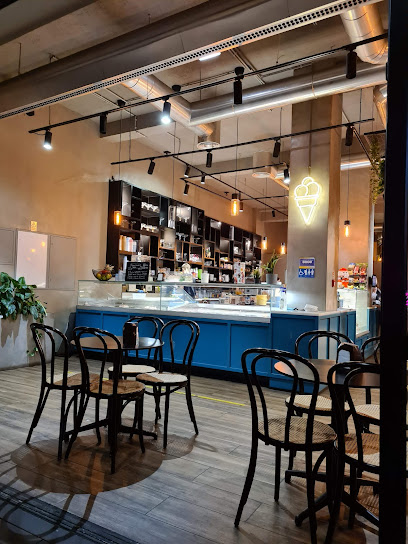
Cervejaria Restaurante Rossio: O Augusto
Experience authentic Portuguese cuisine at Cervejaria Restaurante Rossio: O Augusto in Aveiro – a must-visit for food lovers.
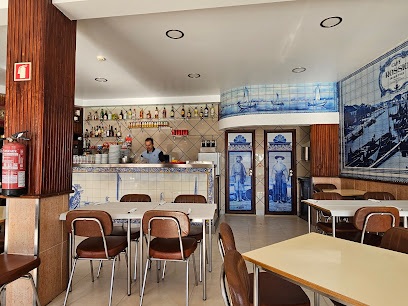
O Legado da Ria
Experience the flavors of Portugal at O Legado da Ria - A seafood haven in Aveiro that celebrates local culinary traditions.
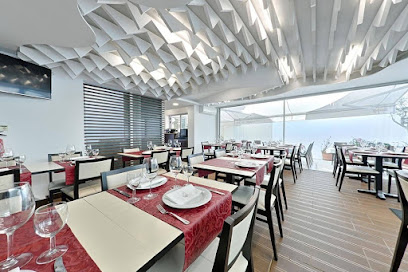
Leitão de Levira
Discover Aveiro's culinary treasure at Leitão de Levira – home of Portugal's famous roasted piglet served with tradition and flair.
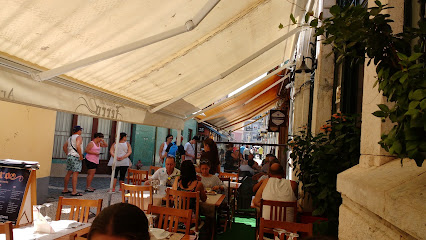
Restaurante Ferro
Discover authentic Portuguese flavors at Restaurante Ferro, where tradition meets modern cuisine in the heart of Aveiro.
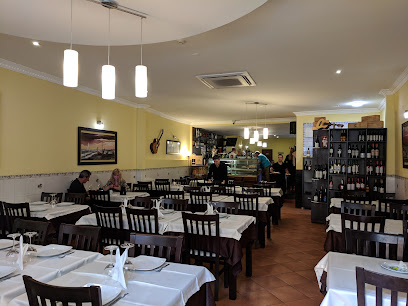
Bacalhau & Afins
Discover Bacalhau & Afins in Aveiro for an unforgettable taste of traditional Portuguese cuisine featuring exquisite bacalhau dishes.
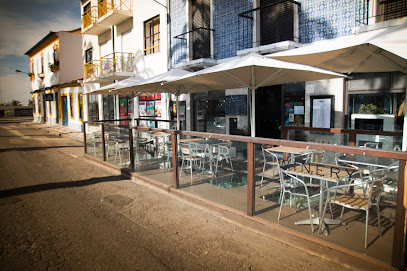
La Mozzarella Aveiro
Experience authentic Italian flavors at La Mozzarella Aveiro, renowned for its gourmet pizzas made from fresh local ingredients.
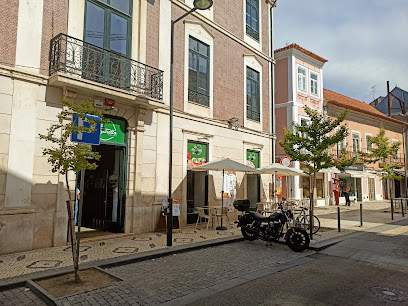
Markets, malls and hidden boutiques
Glicínias Plaza
Explore Glicínias Plaza, Aveiro's vibrant shopping mall with diverse stores, dining, and entertainment options for an unforgettable experience.
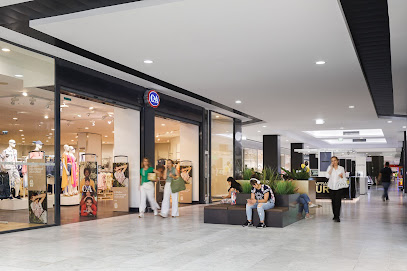
Fnac
Explore Fnac in Aveiro: your ultimate shopping destination for books, electronics, and more in a modern and vibrant atmosphere.
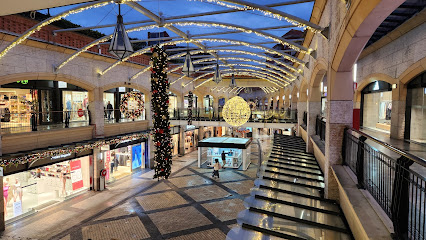
ZARA
Discover the latest fashion trends at ZARA in Aveiro, where style meets affordability in a chic shopping environment.
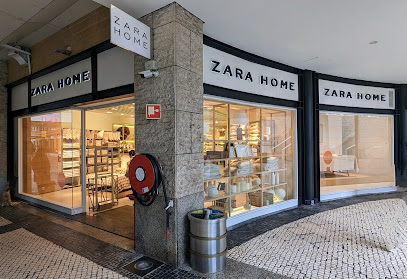
ALE-HOP Aveiro
Explore ALE-HOP Aveiro for unique souvenirs that reflect the vibrant culture of Portugal, perfect for keeping memories alive.
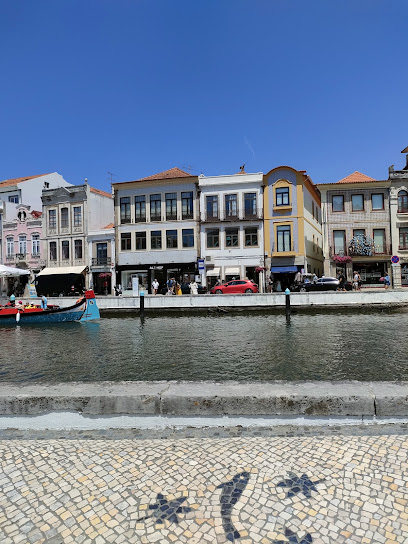
Costa Nova
Explore Costa Nova, a pottery store in Aveiro, Portugal, where handcrafted ceramics embody the region's rich cultural heritage and artistic spirit.
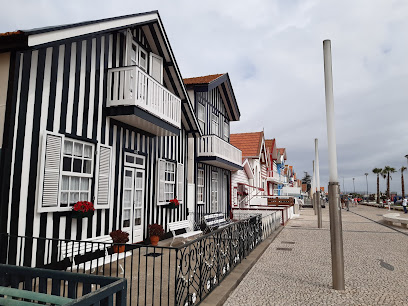
Boutique Nespresso no Aveiro Fórum
Explore the world of exquisite coffee at Boutique Nespresso in Aveiro, where every cup tells a story of craftsmanship and passion.
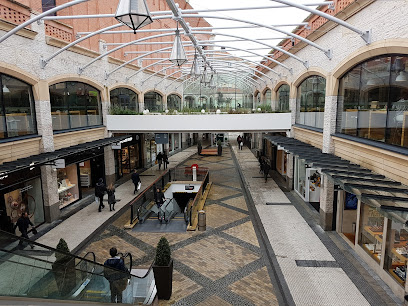
Cais À Porta
Discover unique local crafts and artisanal products at Cais À Porta, Aveiro's charming shopping destination.

Pull&Bear
Explore the latest trends in casual fashion for men and women at Pull&Bear in Aveiro, your go-to clothing store for stylish outfits.
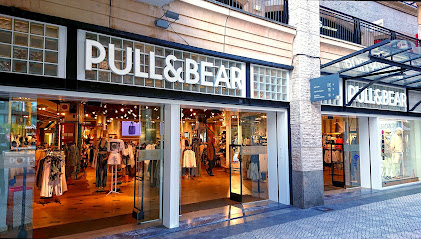
ZARA HOME
Discover stylish home goods at ZARA HOME in Aveiro, offering everything from elegant linens to modern furniture accessories for your perfect living space.
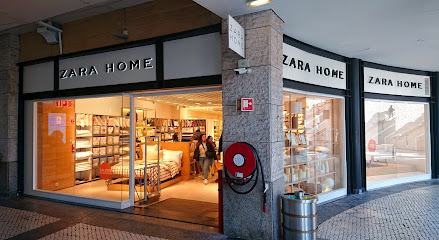
Massimo Dutti
Explore timeless fashion and elegance at Massimo Dutti in Aveiro, where style meets sophistication in the heart of Portugal.

A Casa da Rosa
Discover the charm of Aveiro at A Casa da Rosa, where local craftsmanship meets delightful souvenirs.
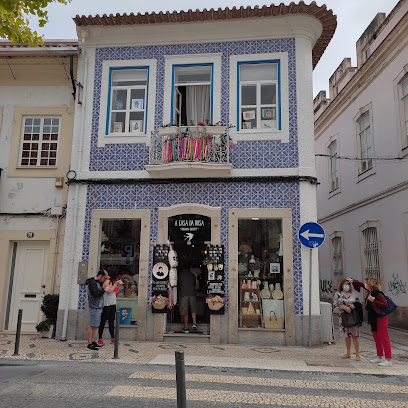
Stradivarius
Discover the latest women's fashion trends at Stradivarius in Aveiro, where chic style meets affordable prices for every occasion.
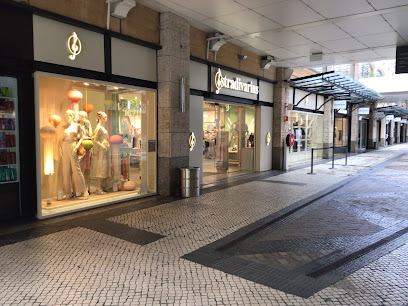
MANGO
Explore the chic and stylish offerings of MANGO in Aveiro, where contemporary fashion meets elegant design for the modern woman.
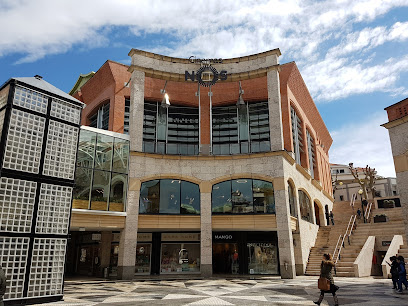
Aqui à Volta
Discover the essence of Aveiro through art at Aqui à Volta, a unique store and gallery showcasing local talent and creativity.
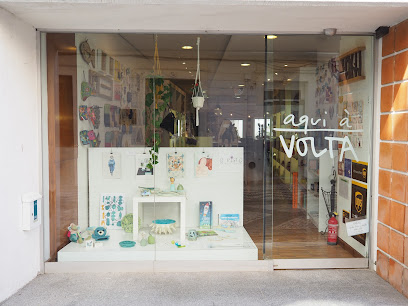
Levi's® Forum Aveiro
Explore Levi's® Forum Aveiro, where quality denim and trendy fashion meet in a vibrant shopping experience in Aveiro.
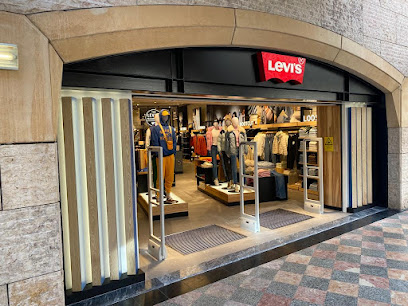
Essential bars & hidden hideouts
Autocarro-Bar
Discover Autocarro-Bar in Aveiro: Where vibrant nightlife meets affordable drinks and a welcoming atmosphere.
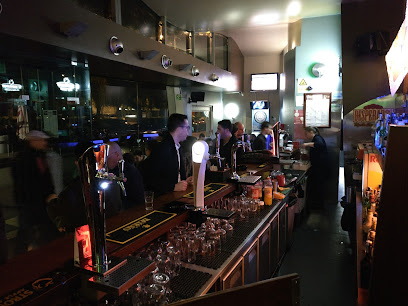
The Iron Duke Pub
Experience the vibrant ambiance and delightful flavors at The Iron Duke Pub, Aveiro's premier spot for craft beer and hearty cuisine.
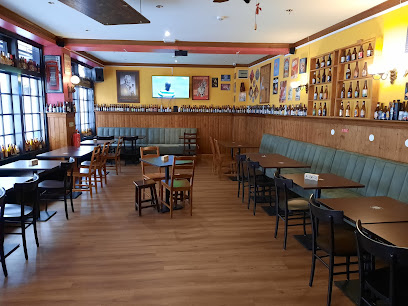
Kitten's Irish Pub
Discover the vibrant spirit of Ireland at Kitten's Irish Pub in Aveiro, where delightful brews and lively entertainment await.
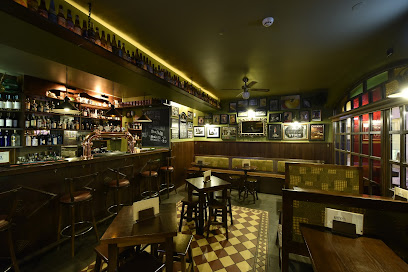
Route 66
Experience the culinary delights of Route 66 in Aveiro, where traditional Portuguese flavors meet international cuisine in a warm and inviting atmosphere.
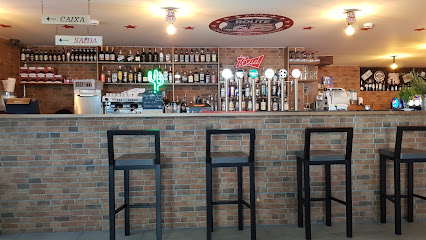
Maria Lounge Bar
Experience the lively ambiance and delightful drinks at Maria Lounge Bar in Aveiro, the perfect retreat for socializing and relaxation.
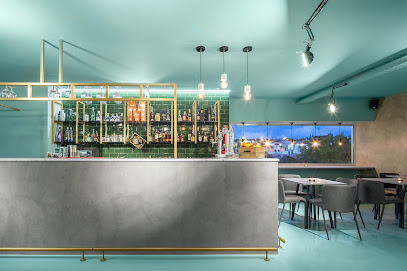
Luxor Lounge Bar Shisha
Discover the vibrant nightlife of Aveiro at Luxor Lounge Bar Shisha, where delightful shisha meets refreshing cocktails in a lively atmosphere.

Santos da Praça
Discover Santos da Praça, Aveiro's vibrant bar, offering creative cocktails and a lively atmosphere to enhance your night out in this charming city.
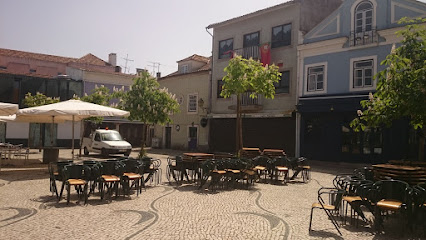
Piano Bar
Discover Piano Bar in Aveiro: A vibrant bar with live music, perfect for unwinding after exploring the charming canals of this picturesque city.
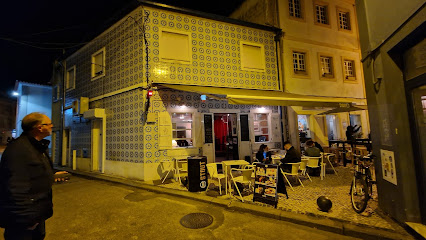
Toc'Aqui Jazz Bar
Discover the vibrant atmosphere and captivating jazz music at Toc'Aqui Jazz Bar in Aveiro, the perfect place for nightlife and relaxation.
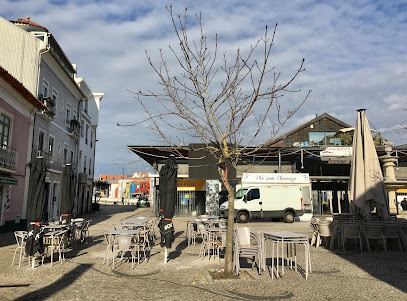
Martin's Bar
Discover the vibrant nightlife of Aveiro at Martin's Bar, where great drinks and a friendly atmosphere await you.

Bar Posto 7
Experience the lively nightlife at Bar Posto 7 in Aveiro, where delicious cocktails and a vibrant atmosphere await you.
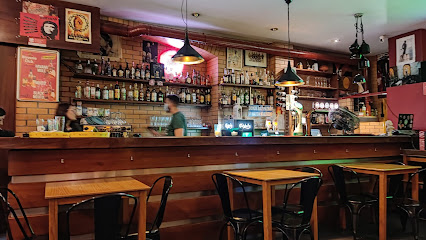
Casa Pina
Casa Pina in Aveiro: A charming bar offering local drinks and a warm atmosphere for a memorable night out.
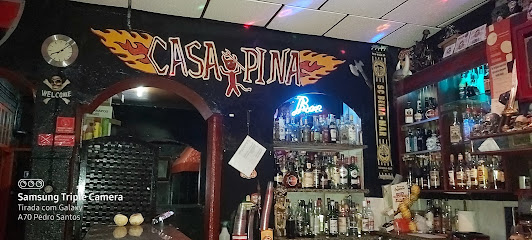
St. Patrick's Irish Pub
Discover the heart of Irish culture in Aveiro at St. Patrick's Irish Pub, where great food and lively entertainment await.
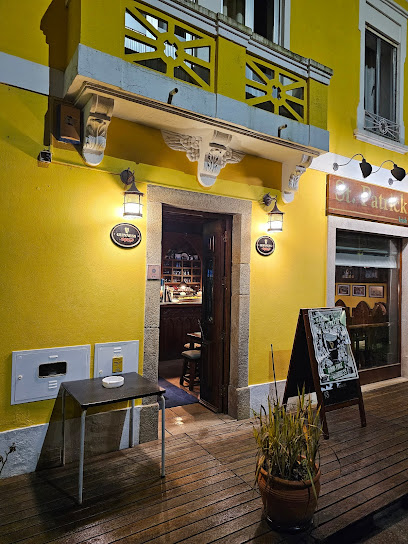
Bodegas Bar
Discover the vibrant atmosphere and delightful drinks at Bodegas Bar, the heart of Aveiro's nightlife, where tradition meets modern flair.
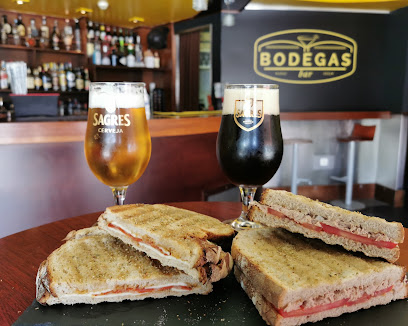
Boémia Bar
Discover the vibrant nightlife of Aveiro at Boémia Bar, where affordable drinks and a lively atmosphere await every traveler.
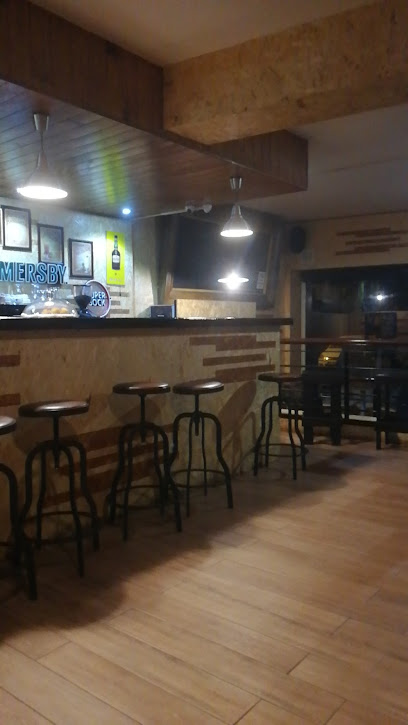
Local Phrases
-
- HelloOlá
[oh-lah] - GoodbyeAdeus
[ah-deh-oosh] - YesSim
[seem] - NoNão
[now] - Please/You're welcomePor favor/De nada
[pohr fah-vohr/deh nah-dah] - Thank youObrigado
[oh-bree-gah-doo] - Excuse me/SorryDesculpe/Desculpa
[deh-skool-peh/deh-skool-pah] - How are you?Como está?
[koh-moo ehs-tah] - Fine. And you?Bem. E você?
[behm/e voh-seh] - Do you speak English?Fala inglês?
[fah-lah een-glehsh] - I don't understandNão entendo
[now ehn-tehn-doo]
- HelloOlá
-
- I'd like to see the menu, pleaseGostaria de ver o menu, por favor
[goh-stah-ree-ah deh vehr ooh meh-noo/por fah-vohr] - I don't eat meatNão como carne
[now koh-moo kahr-neh] - Cheers!Saúde!
[sow-deh] - I would like to pay, pleaseGostaria de pagar, por favor
[goh-stah-ree-ah deh pah-gahr/por fah-vohr]
- I'd like to see the menu, pleaseGostaria de ver o menu, por favor
-
- Help!Socorro!
[soh-koh-roh] - Go away!Vai embora!
[vah-ee ehm-boh-rah] - Call the Police!Chame a polícia!
[shah-meh ah poh-lee-see-ah] - Call a doctor!Chame um médico!
[shah-meh oom meh-dee-koo] - I'm lostEstou perdido
[eh-stoh pehr-dee-doo] - I'm illEstou doente
[eh-stoh doo-een-teh]
- Help!Socorro!
-
- I'd like to buy...Gostaria de comprar...
[goh-stah-ree-ah deh kohm-prahr] - I'm just lookingSó estou a ver
[soh ehs-toh ah vehr] - How much is it?Quanto custa?
[kwan-toh koos-tah] - That's too expensiveIsso é muito caro
[ee-soh eh moo-ee-tooh kah-roo] - Can you lower the price?Pode baixar o preço?
[poh-deh bahy-shahr ooh preh-soo]
- I'd like to buy...Gostaria de comprar...
-
- What time is it?Que horas são?
[keh oh-rahz sah-oh] - It's one o'clockÉ uma hora
[eh oo-mah oh-rah] - Half past (10)Meia (10)
[may-ah/deez oh-rahz] - MorningManhã
[mah-nyah] - AfternoonTarde
[tahr-deh] - EveningNoite
[noy-teh] - YesterdayOntem
[ohn-tehm] - TodayHoje
[oh-zheh] - TomorrowAmanhã
[ah-mah-nyah] - 1Um
[oom] - 2Dois
[doh-eesh] - 3Três
[trehsh] - 4Quatro
[kwah-troh] - 5Cinco
[seeng-koh] - 6Seis
[saysh] - 7Sete
[seh-teh] - 8Oito
[oy-toh] - 9Nove
[noh-veh] - 10Dez
[dehsh]
- What time is it?Que horas são?
-
- Where's a/the...?Onde fica o/a...?
[ohn-deh fee-kah ooh/ah] - What's the address?Qual é a morada?
[kwahl eh ah moh-rah-dah] - Can you show me (on the map)?Pode mostrar-me (no mapa)?
[poh-deh moh-strahr-meh/noo mah-pah] - When's the next (bus)?Quando é o próximo (autocarro)?
[kwan-doo eh oo proh-ksee-moh/ow-toh-kah-roo] - A ticket (to ....)Um bilhete (para ...)
[oom beel-yeh-teh/par-ah]
- Where's a/the...?Onde fica o/a...?
History of Aveiro
-
Aveiro's history dates back to pre-Roman times, when it was known as Aviarium, meaning 'place of birds.' The early settlers were attracted by the rich natural resources of the region, particularly the abundance of salt and fish. These early inhabitants laid the foundation for what would become a crucial maritime and trading hub.
-
During the Roman era, Aveiro became an important center for salt production. The Romans built advanced salt pans and used the salt for preservation of food, which was a significant trade commodity. Remnants of Roman architecture and salt production facilities can still be found in the region, bearing testament to this historical period.
-
In the Middle Ages, Aveiro grew in importance due to its strategic location along the Atlantic coast and its burgeoning salt trade. The construction of monasteries, such as the Convent of Jesus, during the 15th century, contributed to the city's religious and cultural development. This period also saw the establishment of Aveiro as a significant fishing port.
-
The 15th and 16th centuries marked the Age of Discoveries, during which Portugal became a leading maritime power. Aveiro played a role in this era, with local sailors participating in exploratory voyages. The city benefitted economically from the influx of wealth and the expansion of trade routes.
-
In 1575, a devastating storm flooded Aveiro, transforming its landscape and leading to the creation of the Ria de Aveiro, a vast lagoon that defines the city today. This natural disaster reshaped the local economy, making the lagoon an essential part of Aveiro's identity and fostering industries such as fishing, salt production, and later, tourism.
-
The 19th century brought industrialization to Aveiro, with the development of ceramics, glass, and chemical industries. The construction of the railway in 1864 connected Aveiro to major cities like Porto and Lisbon, further spurring economic growth. This period also saw a boom in the production of ovos moles, a traditional sweet made from egg yolks and sugar, which remains a local delicacy.
-
In the 1970s, the establishment of the University of Aveiro marked a significant milestone, transforming the city into an educational and research hub. The university has since become renowned for its contributions to science, technology, and environmental studies, particularly concerning the unique ecosystem of the Ria de Aveiro.
-
Aveiro is rich in cultural heritage, with its unique Art Nouveau architecture, traditional moliceiro boats, and vibrant festivals. The annual Feira de Março (March Fair) and the São Gonçalinho Festival celebrate the city's traditions, attracting visitors from all over the world to experience Aveiro's unique blend of history, culture, and community spirit.
Aveiro Essentials
-
Aveiro is located in the central region of Portugal, approximately 70 kilometers south of Porto and 250 kilometers north of Lisbon. The nearest international airport is Francisco Sá Carneiro Airport in Porto. From Porto, you can take a direct train to Aveiro, which takes around 1 hour. Alternatively, you can drive from Porto to Aveiro via the A1 motorway, which takes approximately 45 minutes. From Lisbon, the train journey to Aveiro takes around 2.5 hours, and driving via the A1 motorway takes about 2 hours.
-
Aveiro is a compact city, and many of its attractions are within walking distance. The city is known for its picturesque canals, and you can explore them by taking a ride on a traditional moliceiro boat. For longer journeys, Aveiro has a reliable public transportation system, including buses and taxis. Bicycles are also a popular mode of transport, and you can rent them from various locations around the city. The city’s train station, Estação de Aveiro, connects to major cities like Porto and Lisbon, making it easy to explore the surrounding areas.
-
The official currency in Portugal is the Euro (EUR). Credit and debit cards are widely accepted in most hotels, restaurants, and shops in Aveiro. However, it is advisable to carry some cash for smaller establishments and local markets. ATMs are widely available throughout the city. It is also common to leave a small tip (around 5-10%) in restaurants and cafes if the service is satisfactory.
-
Aveiro is generally a safe destination for tourists. However, as with any travel destination, it is important to take standard precautions. Avoid walking alone at night in unfamiliar areas and be mindful of your belongings in crowded places. There are no specific high-crime areas targeting tourists in Aveiro, but staying vigilant and aware of your surroundings is always a good practice.
-
In case of emergency, dial 112 for immediate assistance. This number connects you to police, fire department, and medical services. Aveiro has a hospital, Hospital Infante Dom Pedro, which provides emergency medical care. It is recommended to have travel insurance that covers medical emergencies. Pharmacies are available throughout the city for minor health issues and over-the-counter medications.
-
Fashion: Do wear comfortable clothing and shoes for walking around the city. Avoid overly casual attire when dining in upscale restaurants. Religion: Do respect local customs and traditions when visiting churches and religious sites. Dress modestly and avoid loud behavior. Public Transport: Do validate your ticket before boarding trains and buses. Don't eat or drink on public transport. Greetings: Do greet people with a polite 'Bom dia' (Good morning) or 'Boa tarde' (Good afternoon). A handshake is a common form of greeting. Eating & Drinking: Do try local specialties such as ovos moles and fresh seafood. Don't forget to make a reservation if you plan to dine at popular restaurants, especially during peak hours.
-
To experience Aveiro like a local, take a stroll through the colorful Beira Mar neighborhood, where you can find traditional fishermen's houses. Visit the local markets, such as Mercado do Peixe, to purchase fresh seafood and local produce. Enjoy a leisurely boat ride on the canals in a moliceiro, a traditional boat used for harvesting seaweed. For a unique experience, take a trip to the nearby Costa Nova beach, known for its charming striped houses. Engage with locals, as they are often friendly and willing to share insights about their city.
Trending Landmark in Aveiro
-
Forum Aveiro
-
Farol de Aveiro
-
Ponte dos Laços de Amizade
-
Infante Dom Pedro Park - City Park
-
Aveiro Exhibition Park
-
Aveiro Salt Flats
-
Museu Marítimo de Ílhavo e Aquário dos Bacalhaus
-
Aveiro Museum
-
Reserva Natural das Dunas de São Jacinto
-
Moliceiros Pier
-
St. Anthony Park
-
Hotel Aveiro Palace
-
Aveiro City Center by Visit-Aveiro
-
Garden Alboi
-
Aveiro station
Nearby Cities to Aveiro
-
Things To Do in Coimbra
-
Things To Do in Porto
-
Things To Do in Lamego
-
Things To Do in Guimarães
-
Things To Do in Braga
-
Things To Do in Vila Real
-
Things To Do in Tomar
-
Things To Do in Viana do Castelo
-
Things To Do in Ponte de Lima
-
Things To Do in Viseu
-
Things To Do in Caldas da Rainha
-
Things To Do in Chaves
-
Things To Do in Bragança
-
Things To Do in Sintra
-
Things To Do in Lisbon













